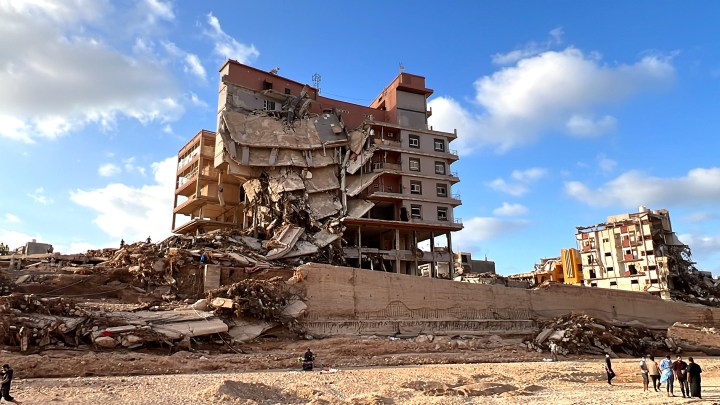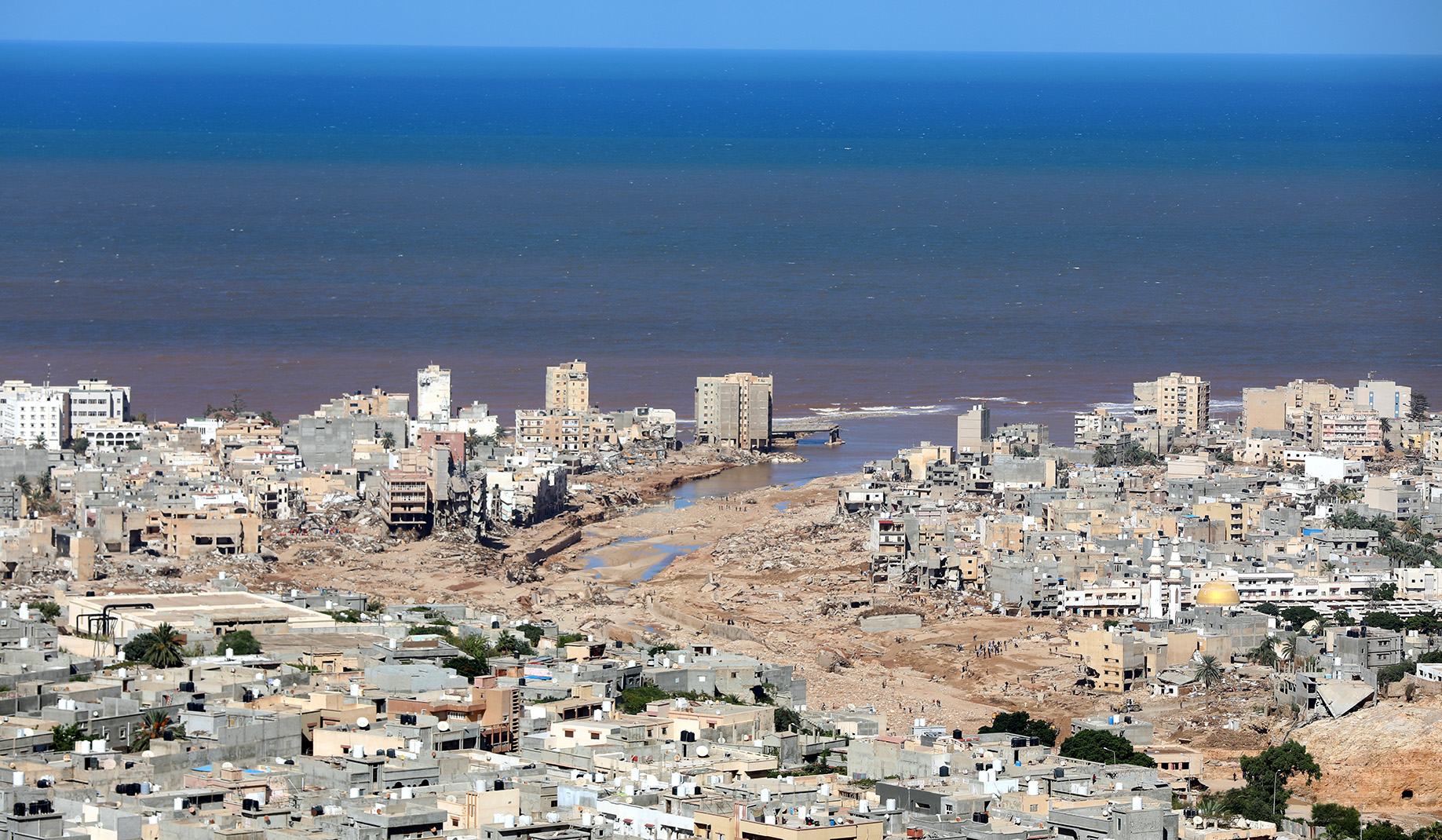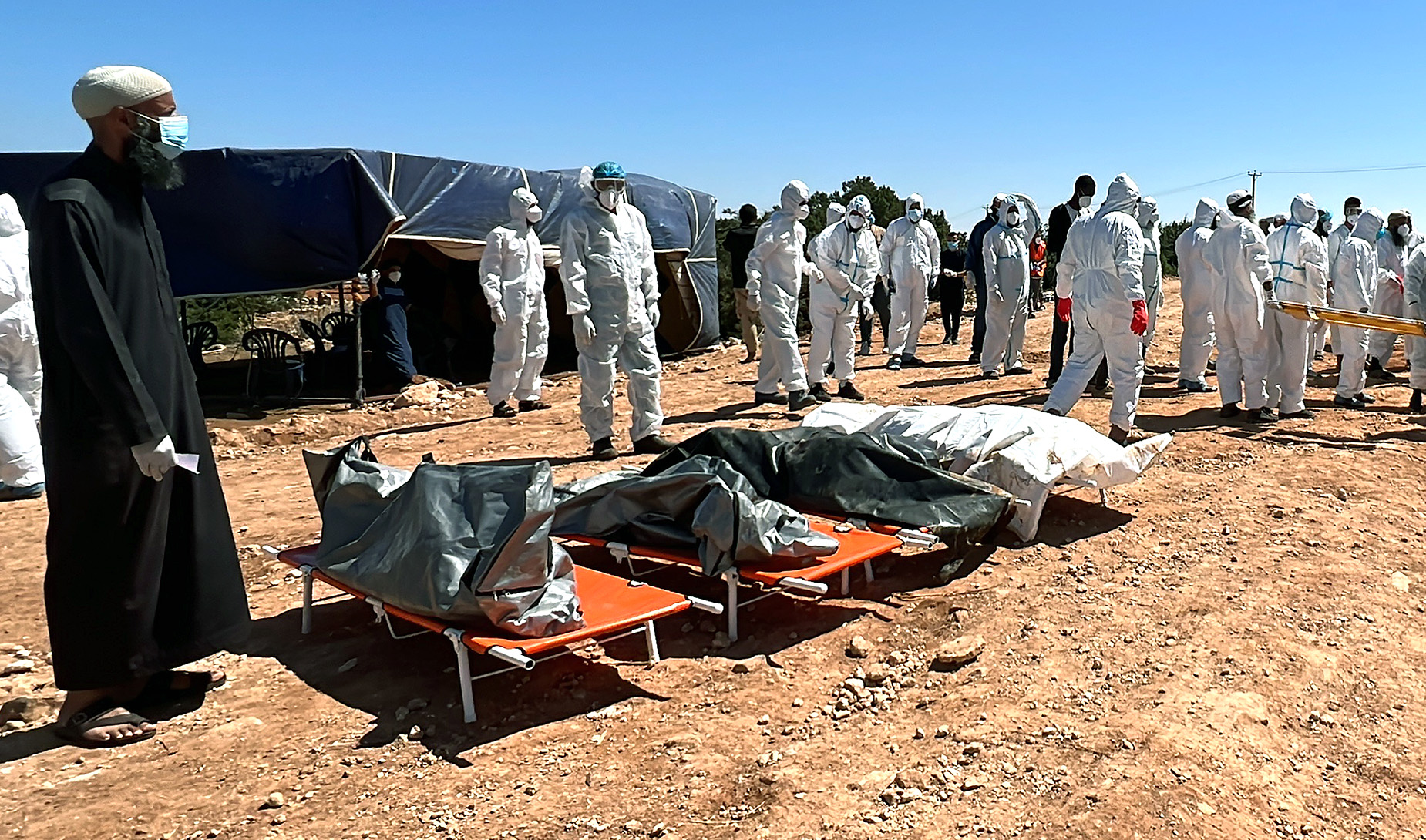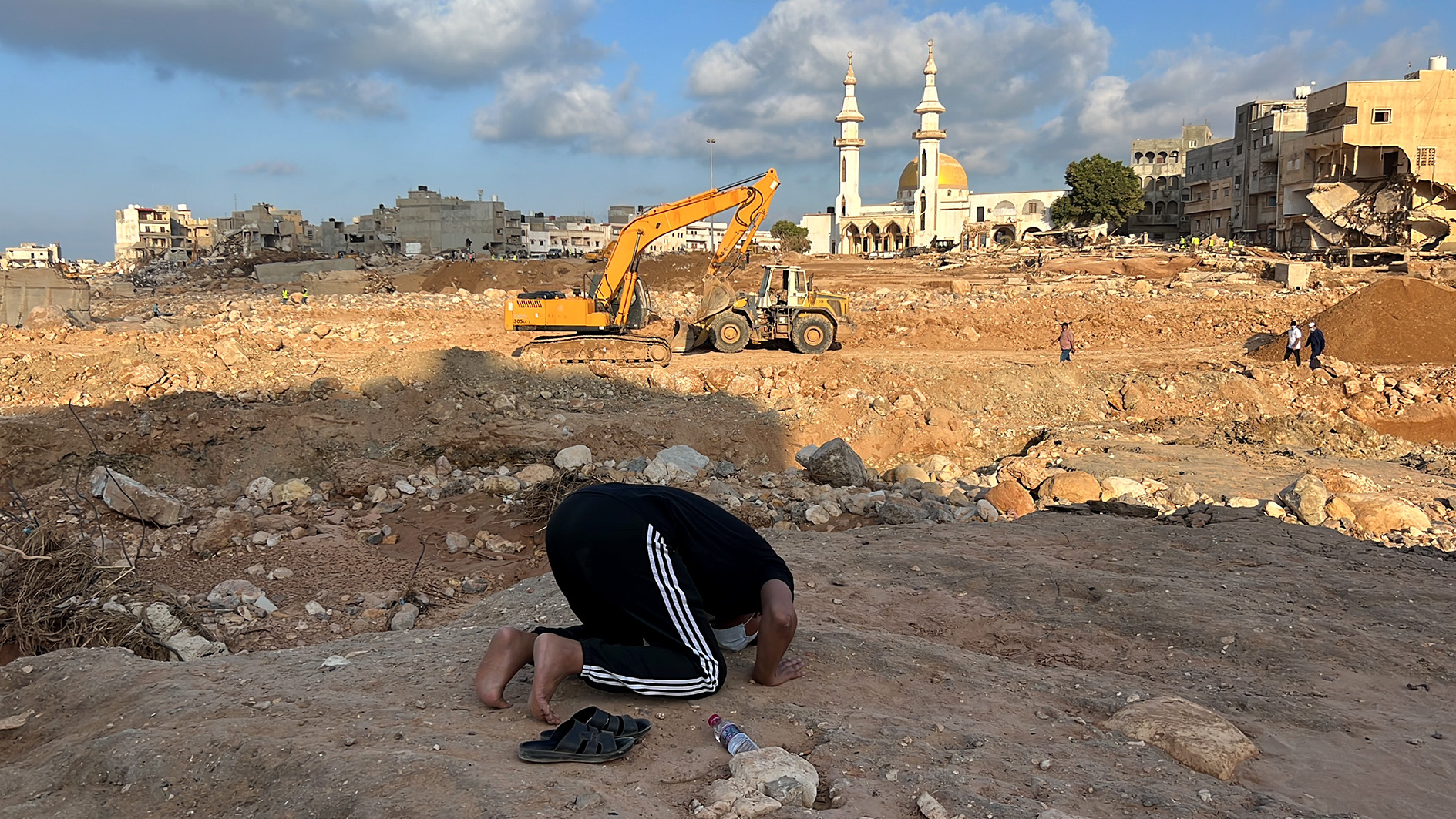DISASTER ANALYSIS
Human-induced global warming made the devastating floods in Libya 50 times more likely, 50% more intense — study

A rapid attribution study has shown that the heavy rainfall that led to the collapsed dams and flooding that ravaged Derna, Libya, was made 50 times more likely by human-induced climate change.
‘An event as extreme as the one observed over Libya has become up to 50 times more likely and up to 50% more intense compared to a 1.2°C cooler climate.”
This was one of the key findings of an attribution analysis by scientists at World Weather Attribution (WWA) of the recent flooding and devastation in the North African country.

Derna, Eastern Libya, on 13 September 2023, days after Storm Daniel brought heavy rains to the area resulting in the collapse of two dams and a flash flood which killed thousands. (Photo: EPA-EFE / Mohamed Shalash)
The WWA is an initiative that brings together researchers from several institutions that carry out rapid attribution studies to give a robust, scientific answer to a simple question that often follows a major environmental event: is climate change to blame?
Earlier this month, catastrophic floods engulfed the Libyan coastal city of Derna, washing neighbourhoods out into the Mediterranean Sea. On 18 September, the Libyan Red Crescent said that more than 11,000 people were reported dead, with a further 10,100 missing. It added that more than 30,000 people had been displaced out of a population of around 150,000 before the disaster. The World Health Organization (WHO), however, later revised that estimate downward to 3,958 deaths.
Dr Ahmed Zouiten, the WHO’s representative in Libya, said, “This is a disaster of epic proportions. We are saddened by the unspeakable loss of thousands of souls. Our thoughts are with the families who have lost loved ones, as well as with all of the affected communities. We are committed to providing the necessary support to restore health services for the affected population in eastern Libya.”

Rescuers stand near bodies of victims who died after Storm Daniel swept across eastern Libya. (Photo: EPA-EFE / Stringer)
According to the WWA, a low-pressure system was associated with the intense rains. Combined with two dams that failed, Libya’s northeastern coast experienced widespread devastation, displacement and loss of life. Roughly 30 million cubic metres of water quickly rushed through the town.
The scientists described it as “a 1-in-300 to 1-in-600 year event. In Libya, the event magnitude is far outside that of previously recorded events.”
Read more in Daily Maverick: Libya floods worsened by opposing governance and poor climate change preparedness
But a warming planet was not the sole factor that led to the destruction. This tragic unfolding was compounded by a confluence of factors, including political instability, a decade-long civil war, deteriorating infrastructure and inadequate emergency systems.
Günter Blöschl, a hydrologist at the Vienna University of Technology, said in an interview with the journal Nature that Libya’s poor infrastructure was as important as the extreme weather in creating devastation and that “lack of maintenance is certainly one of the reasons that contributed to the disaster”. This critical maintenance was likely stymied by the socioeconomic and political instability that has plagued Libya since the ousting of Libyan ruler Muammar Gaddafi in 2011.
During his recent address to the UN General Assembly, Secretary-General António Guterres acknowledged this reality, telling leaders from around the world that “many of the world’s challenges coalesced in an awful hellscape”, adding that Libyans “were victims many times over — victims of years of conflict, of climate chaos, of leaders far and near who failed to find a way to peace”.

A man prays near rescue teams working at a flood-affected area in the port city of Derna, eastern Libya, on 16 September 2023. Unprecedented floods struck Libya after Mediterranean Storm Daniel made landfall on 10 September. (Photo: EPA-EFE / Stringer)
The scientists at the WWA also acknowledge the role of these factors, finding: “Ongoing conflict and state fragility in Libya compounded the effects of the flooding, contributing to a lack of maintenance and deterioration of dam infrastructure over time and increasing people’s risk and the resulting impacts. The conflict also limits nationwide adaptation planning and coordination across a range of climate issues facing the country, such as water scarcity, and extreme weather including heat and floods.”
However, they also noted, “In addition to the lack of maintenance, the Al-Bilad and Abu Mansour dams were built in the 1970s, using relatively short rainfall records, and may not have been designed to withstand a 1-in-300 to 600-year rainfall event.” DM


















Complete and utter nonsense